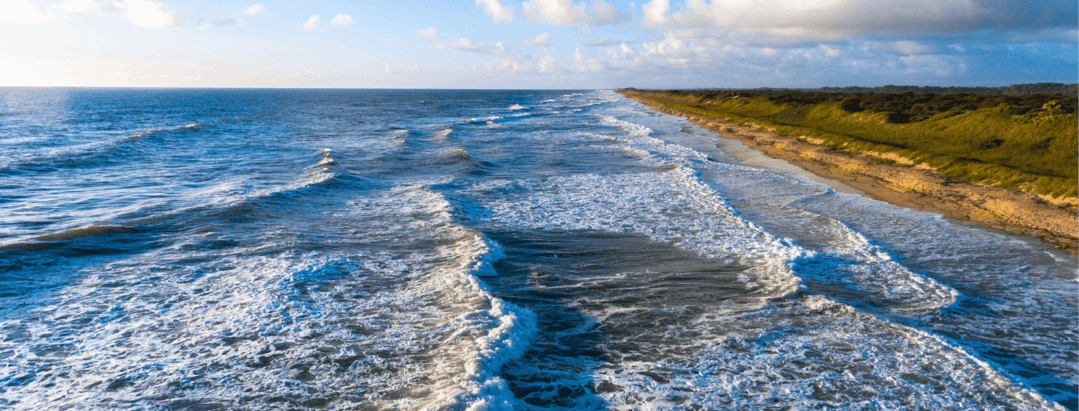In exciting news to start the new decade, the Commonwealth Government has released for public comment a Discussion Paper outlining its proposed regulatory framework to facilitate the assessment and operation of clean energy projects in Commonwealth waters, being the first in Australia specifically tailored for offshore projects situated beyond State controlled areas.
If successful in achieving its objectives, the proposed framework would answer longstanding calls from developers and other industry participants for a comprehensive regime capable of ensuring administrative and regulative certainty, in turn encouraging investor confidence and enabling the realisation of projects going forward.
In an unexpected move, the Commonwealth Government appears to have publicly declared its recognition and endorsement of the utility of offshore clean energy projects within its jurisdiction, with the release of a Discussion Paper and accompanying process map. The Paper sets out the Government’s plans for the development of a new regulatory framework for offshore wind and other clean energy technologies and infrastructure in Commonwealth waters, generally being ocean areas beyond three nautical miles from the coastline.
A Change in Thinking?
The Paper cites anticipated technological improvements and cost reductions as factors likely to drive investor and developer interest in such projects. It also highlights the various benefits and advantages of these projects, including high employment opportunities, year round generation potential and non-invasiveness on natural landscapes (also being reasons for the success of offshore projects in Europe). The Paper then sets out the skeleton of a framework which looks to address the entire life cycle of referenced projects.
In particular, the proposed framework, which is expressly ‘technology neutral’, would seek to manage and regulate projects from inception through each of their “exploration, construction, operation and decommissioning” phases. The framework would allow projects to secure long term operational tenure of an initial period of up to 30 years, if granted a ‘commercial licence’ under the regime (which would follow the grant first of a ‘feasibility licence’ providing exclusive preliminary and exploratory rights for a term of up to 5 years, and which feasibility licences will be awarded on a competitive basis once an area is declared as being a suitable energy site).
In light of the tendency of Australian governments and modern energy policies to favour onshore generation, often for economic reasons that have been quite legitimate in the past, this announcement gives reason for optimism for stakeholders of proposed developments. This is particularly so for those involved in proposals that have been frustrated in recent times by the inflexibility and incompleteness of the current regulatory environment, which relies on general and interspersed laws widely considered to lack the specificity required for application to the development of proposed offshore clean energy infrastructure.
Such projects likely to welcome the release of the Paper include the ‘Star of the South’ offshore wind farm project, an Australian first comprising some 250 proposed turbines around 8-13 kilometres off of the coast of the Gippsland region in Victoria. The project will look to harness the stronger and steadier winds often present in offshore zones, whilst also avoiding the need to secure access to private onshore land.
Watch This Space – There is More to Come…
There are aspects of the proposed framework that we expect will be subject to close scrutiny in the course of the initial public consultation process.
Firstly, the Paper does not address in any detail how the proposed framework will interact with existing State laws, policies and processes, and in particular where a project exists over both Commonwealth and State controlled areas (for example, where generation infrastructure is located in Commonwealth waters, but associated transmission cables run through State controlled coastal waters back to shore).
Secondly, it is proposed that NOPSEMA, the National Offshore Petroleum Safety and Environmental Management Authority, will play a significant role in decision making processes within the framework, advising the relevant Minister on safety, environmental and technical issues, and also exercising enforcement powers against eventual licence holders.
Whether NOPSEMA is accepted by developers and the sector generally as an appropriately qualified regulator, notwithstanding its primary function and experience as a regulator of oil and gas activities in Australia, which present hazards of an inherently different character, may be a telling factor in the success and approval of the framework going forward.
In any event, we look forward eagerly to the developments and discussions to follow in this space over coming months. We will provide further updates on subsequent events, and as the initial consultation and submission process unfolds.
Further Information
If you have any queries regarding this announcement and what it means for you and your operations, or how you or your organisation may engage with or submit feedback to the Commonwealth Government in respect of the proposed framework and the Paper, please contact, Jeremy Schultz, Gavin Cragg or Kyra Reznikov.
This Alert is intended as general information only. It does not purport to be comprehensive advice or legal advice. Readers must seek professional advice before acting in relation to these matters.



